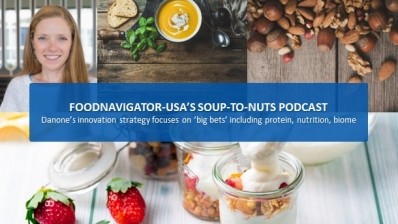Future Food Tech Alternative Proteins
3 strategies to increase consumer acceptance, adoption of plant-based, novel proteins

Is it because the taste, texture and nutrition are falling short of their expectations? The price is not right? The application or format is not hitting the mark? Or maybe they do not know where to find the products in stores? Or is the marketing and key messaging misguided?
The answer: All of the above, according to experts who spoke at Future Food Tech’s Alternative Proteins Summit in Chicago last month on the panel Consumer Deep Dive: Championing Strategies for Increased Acceptance and Adoption.
They warn plant-based players need to rethink how they innovate to better meet consumer needs and reposition their products so that they stand on their own merit, rather than constantly comparing them to animal proteins, which can set unrealistic and unachievable expectations.
Their advice also applies to other emerging proteins, including those from cultivated meat and precision fermentation, they add.
Remove the direct comparison to conventional animal protein to minimize misguided taste, texture expectations
The main reasons that consumers do not repeatedly purchase plant-based meat is because the taste and texture do not meet their expectations, which are often based on their experiences with animal proteins, noted Kate Toews, associate partner with McKinsey & Company.
This comparison, and by extension systemic bias, is engrained in many consumers, and reinforced by the industry at large. For example, plant-based, cultivated and precision fermentation proteins are often characterized as “alternative” and frequently use animal proteins as descriptors – such as purposely misspelled versions of chicken, like chikn – or callouts for ‘animal-free.’
And while there is room for improving the taste and texture of various proteins, stakeholders may be chasing a moving target if they continue to use animal-protein as the standard.
“When we talk about mimicry, it is really making products that we already know and really copying that product. So, of course, you put in the mind of the consumer some big expectation on how the product should be both in terms of taste, price, nutrition and even if there has been a lot of progress in the industry, it will always be extremely difficult to have something that is fully similar to a milk or meat … product,” said Sonia Huppert, global innovation marketing lead, Re-Imagine Proteins, IFF
She encourages plant-based and other protein players to follow IFF’s lead and move “beyond mimicking.” IFF does this through its Greenfield Design, which Huppert described as “an untapped potential for the industry” that will require stakeholders to take “some risk at some point because you need to develop things that cannot be described by the consumer.”
Likewise, the descriptor ‘animal-free’ for proteins made via precision fermentation may be “accurate,” but it is not resonating with consumers, cautions Stephan van Sint Fiet, CEO, Vivici, which makes proteins via precision fermentation.
Rather than use a term that is accurate but limiting, he encourages industry to talk about the benefits that the food or beverage delivers to consumers. For example, how a cheese made with protein from precision fermentation can stretch, melt and still retain a sense of bite.
“What does this particular food or beverage deliver for the consumer? And it is not about the technology … it is not about the ingredient, it is really about what doe the consumer get out of it for themselves, he said.
Skip the science when talking with consumers
Similarly, the panel urged players to talk less about how the science and technology used to make a protein and more about the benefits as a food ingredient it delivers consumers.
“We’ve run some research with consumers over the last year in precision fermentation and novel proteins just to test openness to trial, willingness to pay, etc, withing particular labeling. And because a lot of the novel proteins will have a new language on back of pack that is unfamiliar to consumers, we wanted to what degree that would be a barrier for consumer adoption,” Toews said.
“What we learned was, despite the fact that many people have not seen or are not familiar with these proteins, there is a tremendous amount of willingness to try. … novel proteins,” she said.
However, she said, “science-y and more processed technology driven claims are not a driver of adoptions.” Rather “very traditional claims, like ‘good source of protein,’” were what drove trial, she said.
van Sint Fiet agreed, noting, “where Vivici is taking a different approach to many of our peers is that we de-emphasize the biotech nature of our business and emphasize the food and ingredient nature of our business. So, we say we innovate like a biotech company, but we operate like an ingredient and food company. … We try to focus our consumer messaging on the ingredient. How it is made, our supply chain and the technology behind it, [misses] the mark in a major way.”
By resisting the urge to “over-explain” a product, Suzannah Gerber, USDA-NIFA fellow, added brands give consumers more space to have an emotional or hypnotic interaction with their product.
That said, the panelists all agreed clear labeling and transparency is also essential to earning consumers’ trust and repeat purchase.
Go beyond the center of the plate
Novel proteins also can drive trial and consumer acceptance by moving beyond the center of the plate at lunch and dinner, where much innovation to date has been concentrated, said Toews.
She explained that McKinsey found in consumer research that shoppers are two to three times more interested in trying a non-center of the plate application.
“Breakfast was one of the top categories that people are interested to see some novel proteins used,” along with snack foods, she said. “Dinner was not the place that people wanted to see these novel proteins.”
She hypothesized consumers want a more familiar product during “culturally” important events, like dinner, but the stakes are lower for snacks or breakfast where there is less focus on togetherness and tradition.


















